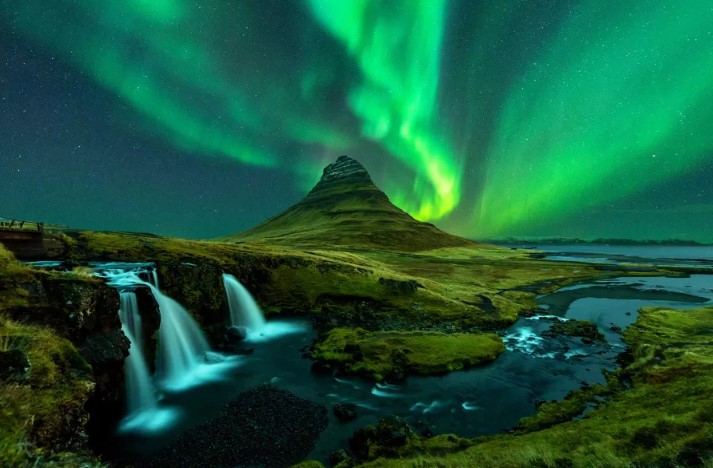
Even though the summer of supermoons and meteor showers is coming to a close, the fall brings another assortment of night-sky experiences — starting with a fan favorite: northern lights.
This month kicks off aurora-borealis season in far-north locales like Alaska, Iceland, and Norway. Of course, the aurora occurrences can't be predicted — that’s the fun of it — but there are ways to improves the odds of seeing the lighting spectacle. Finding a dark-sky location with minimal obstructions and light pollution improve the chances of seeing the lights. Apps like Space Weather Live and My Aurora Forecast are two of the most popular northern-lights predictors, but nothing beats monitoring the night sky from bed!
That’s not all September’s night sky has in store. We have planet sightings and NASA’s first-of-its-kind asteroid-collision mission ahead. Here’s how to enjoy the best of the northern hemisphere’s night sky this month.
September 14: Occultation of Uranus and the moon
If you’re visiting Africa, Asia, or Europe on Sept. 14, point your eyes to the sky for a unique planet-meets-moon sighting: the moon passing in front of Uranus. Lunar occultations, the technical term for one object passing in front of another, are tough to see from Earth’s surface given our planet’s proximity to the moon — but this one’s an exciting exception. Check this map from In-the-Sky.org to see where and when you can spot it.
Sept. 16: Neptune at opposition
On Sept. 16, Earth will pass between Neptune and the sun. This event, known as opposition, coincides with the planet reaching its closest proximity to the sun (called perigee). The result: Neptune will be at its brightest and most visible, according to SeaSky.org. Sure, the far-flung planet will still appear small — only as a tiny blue dot, even in powerful telescopes — but it’s worth stepping out to spot the icy planet.
Sept. 22: Fall Equinox
It’s officially autumn in the northern hemisphere come 9:04 p.m. EDT on Sept. 22. This marks the sign of the days getting shorter, and nights getting longer — a welcome change in the world of stargazing. September’s equinox is also one of the most active aurora periods, so if the northern lights are on your bucket list, plan your aurora-hunting trip now.
Sept. 26: Asteroid crash via NASA DART mission
Buckle up as Sept. 26 welcomes an event straight out of the science-fiction aisle: NASA’s first mission to deflect an asteroid will occur, according to the NASA website. During the mission, known as the Double Asteroid Redirection Test (DART), the DART spacecraft, launched in November 2021, will collide with a non-threatening asteroid. Now, we’re not just blowing up space objects for fun. It’s a test to determine if this approach could successfully redirect speed and course for any future asteroids that might collide with our planet. Follow NASA’s social media accounts for up-to-date news and live content.
Sept. 26: Jupiter at opposition
Starting the evening of Sept. 26, stargazers can admire Jupiter at opposition in the constellation Pisces. By midnight on the east coast, Jupiter reaches the highest point in the sky, according to In-the-Sky.org. It will also make its closest approach to Earth at this point, so grab those binoculars and look up.
Sept. 29: NASA Juno Mission Flies by Europa
Last year, NASA extended the mission of its Juno spacecraft, which has been orbiting the planet Jupiter since 2016. Come Sept. 29, Juno will fly by Jupiter’s Europa moon, which might be the best place in our solar system to find signs of alien life, according to a CNET article. It will hover just 221 miles above Europa’s surface, according to Forbes. This event will likely reveal more mind-boggling images from the planet, just like it did in early 2021. These photos will help inform future missions to Jupiter.














